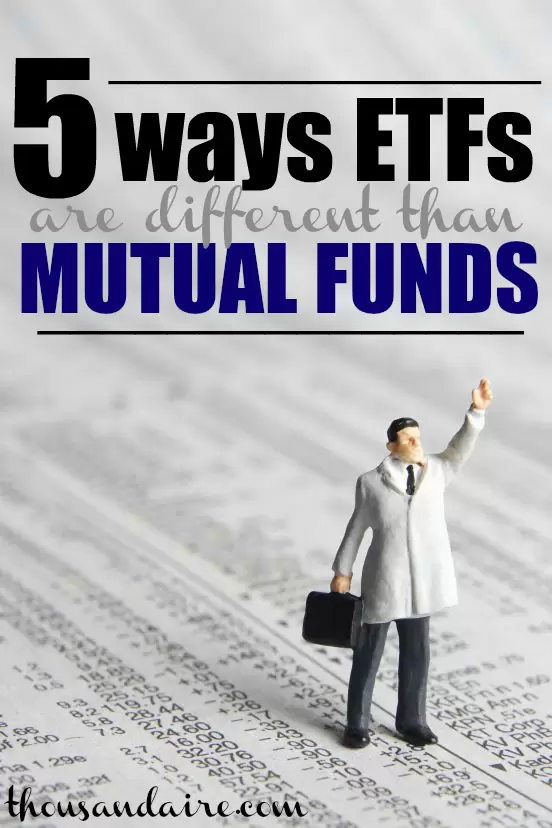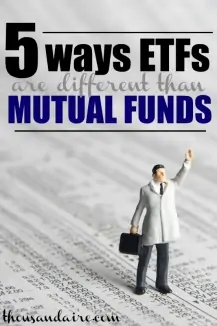Let me say this up front. I think ETFs, or exchange-traded funds, are super cool. I have nothing against mutual funds – or any product, really – but I do have a thing for ETFs. Undoubtedly, I am not alone in this, but I feel compelled to confess my bias up front.
ETFs and mutual funds offer the opportunity for individuals to take part in larger portfolios of stocks, bonds or other securities, providing easy access to diversity for the smaller investor. Each is sold in shares, whose net asset value, or NAV, reflects the price of the underlying securities in the portfolio. It’s right about here, however, that the similarities end. Their differences are numerous, but here are five of the most obvious:
1. ETFs trade on the secondary market.
This one is simple. Mutual fund shares, for the most part, are purchased from and redeemed by the fund. (The exception to this would be closed-end funds, but that’s another post altogether.) This is the primary market. ETFs, on the other hand, are bought and sold on the secondary market, like common stocks.
2. The price of an ETF changes throughout the day.
Mutual fund shares are valued and priced at the end of the day, which means that an investor who decides to purchase or sell shares will do so at a price to be determined when trading closes for the day. ETFs, on the other hand, are priced throughout the day, and allow investors to take advantage of short- term gains and losses in the market. (Which is not a selling point for long-term investors. It is merely a difference from traditional mutual funds.) It also bears mentioning that ETF shares purchased or sold at a price that differs from NAV.

3. Trading of ETF shares has little effect on NAV.
A mutual fund can essentially issue as many shares as investors want to buy, which has performance implications. Mutual funds must purchase securities when money is invested, and sell them when shares are redeemed. This results in trading costs, which are paid by the fund. Also, demand can be an issue for mutual funds. Excess demand can put fund managers in the position of looking to buy, even when, in a perfect world, they may prefer to time their opportunities differently. The same goes for redemptions, when investors sell their shares back to the fund. If the fund gets enough redemption requests, it can be forced to sell securities it would rather hold on to, which can mean the fund misses out on an anticipated gain, or realizes a gain that is taxable to the fund.
Buying and selling of ETF shares does not impact its NAV, since the fund is not involved in the transaction.
4. Most ETFs are passively managed.
ETFs are typically designed to reflect a specific index or even a subset of an index. In this way they do resemble some mutual funds. Changes in the ETF’s composition generally reflect changes in the index, or result from rebalancing to bring the portfolio back in line with the index.
However, many mutual funds are actively managed, where the portfolio manager’s goal is to beat an index.
5. ETFs generally have lower expenses.
After reading number 2, it would be logical – and correct – to conclude that ETFs generally offer lower expenses than mutual funds. ETFs bear little to no trading costs, require less marketing and incur fewer distribution costs than mutual funds. Index mutual funds close this gap a bit, but as a general rule of thumb, ETFs are cheaper.
Comparing ETFs to mutual funds is the logical place to start your education, but there are many additional benefits to ETFs, along with potential downside. Because I believe that responsible investing requires a deeper dive, look for more about these intriguing products, including tax advantages, legal structure and more.
Powered by Linky Tools
Click here to enter your link and view this Linky Tools list…

